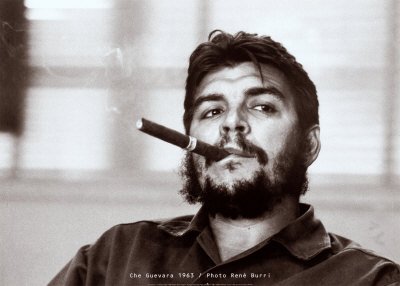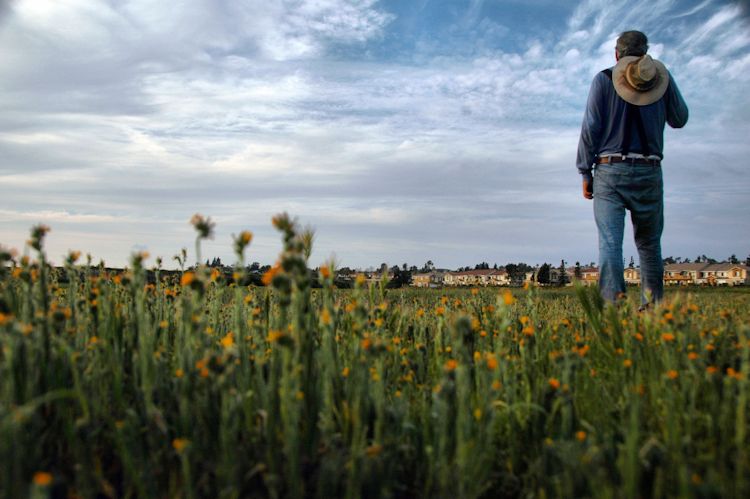Pax Nortona – A Blog by Joel Sax
From the Land of the Lost Blunderbuss
Home - Social Justice - Class - Saint Che
Saint Che
Posted on September 23, 2007 in Class Myths & Mysticism

‘Halt, do not shoot, I am Che Guevara and I am worth more alive than dead.’
 The Guardian has an article about the perserverance of the memory of Che Guevara, atheist Communist who is now regarded as a blessed one by the people of the village where he was brought for execution after being hunted down by Bolivian troops:
The Guardian has an article about the perserverance of the memory of Che Guevara, atheist Communist who is now regarded as a blessed one by the people of the village where he was brought for execution after being hunted down by Bolivian troops:
By 8pm in the main square of the dusty town of Vallegrande, the only sound is the buzz of prayer coming from the church. Inside, devoted Catholics sit and stand around the image of Our Lord of Malta – the only black Christ in Latin America, brought to this Bolivian town during the Spanish conquest.
But this is not the only foreign element of devotion. Father Agustin, the Polish priest, reads out prayers written down by local people: ‘For my mother who is sick, I pray to the Lord and …’, hesitantly, ‘to Saint Ernesto, to the soul of Che Guevara.’ ‘Saint Ernesto,’ the parishioners murmur in response….
In his 1967 dispatch to the Guardian, journalist Richard Gott, in Vallegrande on the day of Guevara’s death, wrote: ‘It was difficult to recall that this man had once been one of the great figures of Latin America. It was not just that he was a great guerrilla leader; he had been a friend of Presidents as well as revolutionaries. His voice had been heard and appreciated in inter-American councils as well as in the jungle. He was a doctor, an amateur economist, once Minister of Industries in revolutionary Cuba, and Castro’s right-hand man. He may well go down in history as the greatest continental figure since Bolivar. Legends will be created around his name.’
Gott was right. Susana Osinaga, a nurse who cleaned Guevara’s body back then, recalls: ‘He was just like a Christ, with his strong eyes, his beard, his long hair.’ Today the laundry where Guevara’s corpse was laid is a place of pilgrimage. On the wall above Osinaga, an engraving reads: ‘None dies as long as he is remembered.’ Osinaga has an altar to Guevara in her home. ‘He is very miraculous.’
Saint Che. Friend of Fidel Castro. You can’t go to a latino event in these parts without seeing his beret-capped face looking off over your left shoulder to some future Marxist workers’ state. When you view altars constructed for the Day of the Dead, you’ll often see his image among greats of the Left who include Dr. Martin Luther King and Gandhi. Bullets and compassion for the destitute and struggling made him so venerable.
Che was a thinker and a poet. He joined the Marxist left because he had witnessed the suffering of the poor and thought there was a better way. Only Communism, he thought, cared about Latin America’s downtrodden. So after studying medicine, he hooked up with Castro, took up a gun, and engaged in guerilla warfare in nations where a sliver of a class of wealthy magnates oppressed hundreds of thousands of workers. For decades, the peasants had cried for land reform. Capitalism had failed (as it still does) to provide the right to control of the means of self-survival. Those who worship him know that Che saw this and tried — in a flawed, pinkish way — to change this.
In the end, his opponents executed a man but not a legend. The faces of my mostly Republican neighbors turn red when they see his visage at Mexican Independence Day celebrations, but there is nothing they can do about it. He is an emblem of latino resistance to norteamericano machinations in their lands, a threat to white people of floods of tanned immigrants crossing their borders, taking their jobs and, by their naturalization and votes, their precious but falsely free market government. He does not die. Like many a saint, however, he stands for renunciation of the worldly as an icon for sale in vulgar, popular marketplaces and hash houses.

